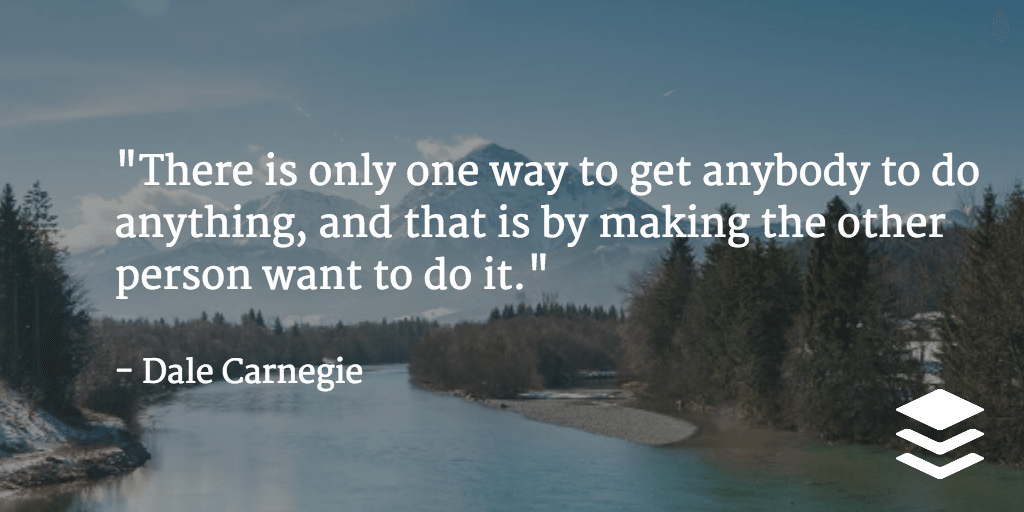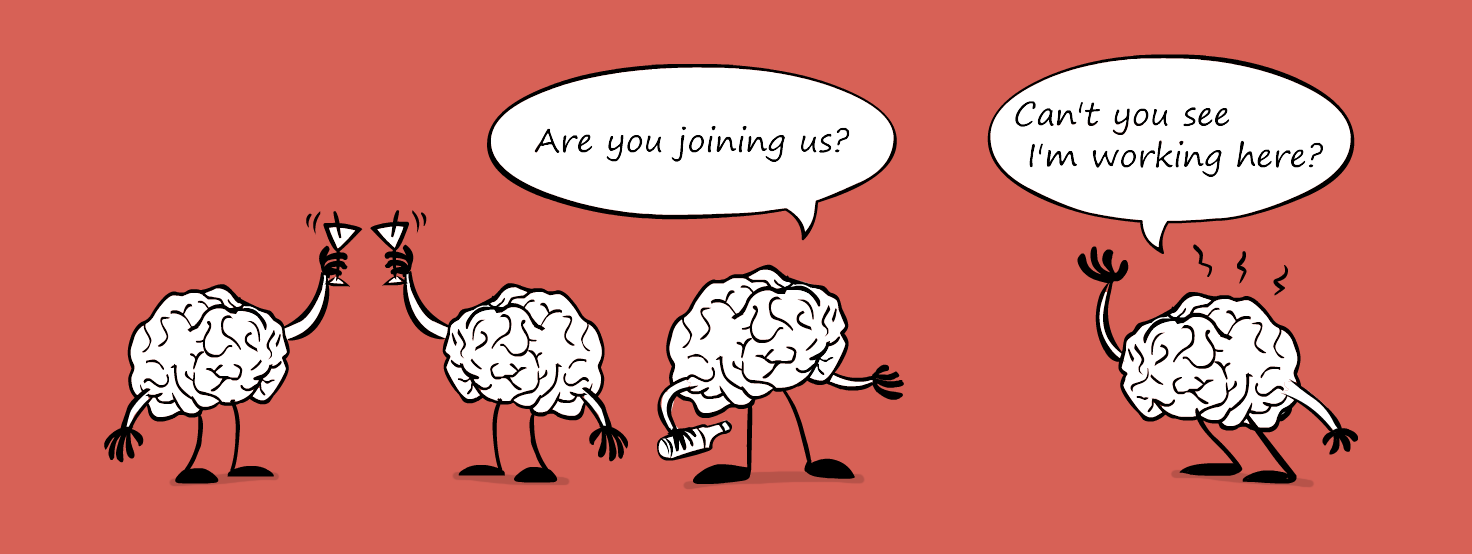
Why We Buy Into Ideas: How to Convince Others of Our Thoughts
This is a guestpost by Iris Shoor, co-founder and VP Product and marketing at Takipi, more about Iris at the bottom of the post.

If you think about it, each one of us has different natural and acquired capabilities. Some of us learn new languages quickly, some are more social than others while some remember the face of each person they’ve come across. These strengths determine how we think and make decisions. Yes, this is probably obvious – different people think in different ways.
And yet the consequences of this couldn’t be any more powerful: It means that people interpret what you’re saying in different ways, based on the way they think. To put differently: the important thing is not what you say – it’s what others hear. A truth Dale Carnegie knew a long time ago:
“There is only one way… to get anybody to do anything. And that is by making the other person want to do it” ~ Dale Carnegie

Communicating well with the people around us and managing to convince them is a daily challenge. Now, here’s an interesting paradox – while looking to convince others we rely on our own thinking tools and strengths. It doesn’t matter if you’re trying to persuade your manager to adopt a new idea, or your teenage daughter to take school more seriously. When we need to persuade others most of us focus on what we do best – some are very eloquent, others give great examples.
Now, switch chairs with your listener and ask yourself what his or hers strength. Sure, you take into consideration what’s important to them, but – how about understanding how they actually think?
To make the best out of this read, pick someone you work with, live or spend time with. Try to fit this person into the different thinking categories. You’ll find that you’ll be able to better understand their way of thinking.
Individual thinking vs. Group thinking – are you thinking about revolutionary ideas in the shower?
Think back for a second – where did most of your eureka moments occur? By yourself, in the shower, sitting silently at your desk or walking? Or maybe with other people, brainstorming with your teammates?
Identifying whether one thinks well by himself or as part of a group will uncover how that person makes decisions, and when he’s most productive. Do you need to start a conversation with him or her to spark their best ideas, or maybe it’s better to simply give them some time by themselves?
To quickly identify if someone thinks better individually or in a group, I ask two simple questions:
- In high school/ university – did you prefer studying by yourself or in a group?
- 2. After a long and exhausting day at work, how do you prefer to relax – by reading a book by yourself or meeting friends?
You’ll find out that most people will answer within a blink of an eye.

How to communicate better after identifying individual / group thinking-
- Choose your presentation strategy – Individual thinkers need some time by themselves to digest a new idea, try sending them suggestions by e-mail or introduce a new idea and then giving them some time to think about it. Group thinkers will react much better when talking about a new idea – so start a real conversation and give them opportunity to voice their thoughts. When group thinkers ask to talk about something, they’re actually asking you to brainstorm with them to help find a solution using conversation.
- Use meetings wisely – Meetings are a great place for group thinkers to express themselves, but not so much for individual thinkers. To get the best results out of everyone, try to raise the main issues before the meeting itself, so individual thinkers will have time to deal with it using their own tools.
In this fascinating article on the rise of the New Groupthink, Susan Cain deals with how society encourages working in groups while most people are more productive when working alone :
“What distinguished programmers at the top-performing companies wasn’t greater experience or better pay. It was how much privacy, personal workspace and freedom from interruption they enjoyed. 62 percent of the best performers said their workspace was sufficiently private compared with only 19 percent of the worst performers”
“Picture this” – Auditory vs. Visual thinking
Do you think mostly in words or images? When you observe a new product (like, say the new iOS 6) do you read about it first, or rush straight to the images?
In advertising campaigns, where convincing people is everything, you’ll always see both languages used together – strong copy which goes hand in hand with an interesting image. Some will remember what they’ve read, others will remember what they’ve seen. The segmentation between these categories originally came from researchers exploring different learning styles to improve the ways students are taught by understanding how different minds work.
How to identify if someone thinks in an auditory or visual way? I usually ask people to describe a certain event – like the last party they attended or the worst flight they were on. You’ll soon notice that some use names of people and places, times and phrases, while others describe an image – the size of the room, the colors and how people looked. Notice the different verbs they use. Auditory thinkers will tend to use verbs such hear, listen, explain. Visual thinkers are much more likely to describe a situation using see, look, watch. You can find out which category you belong to here.
How to convince better by understanding auditory vs. visual thinking
- Use both languages – When I pitch a new idea, much like in advertising, I try to balance between the text and visual. It can be an email with a written suggestion and a screenshot, or a presentation slide with an important message complemented by an image representing the same idea.
- Create a visual using words – the same applies when talking about an idea. You don’t usually have enough time to prepare a visual, but you can construct it with words. Creating a vivid picture in someone’s head – the time of day, the location, the colors, is one of the best ways to have a visual thinker remember and understand your ideas.
- Give visual thinkers something to doodle on – I’ve noticed that the larger the whiteboards we use in meetings, the better the outcome. I always have papers, a whiteboard or an iPad handy when brainstorming with others. At one point we’ve replaced all the tables at the office to glass ones, which can be doodled on. This small step has increased everyone’s productivity. Here’s an interesting finding based on study published in the journal Applied Cognitive Psychology: ”subjects given a doodling task while listening to a dull phone message had a 29% improved recall compared to their non-doodling counterparts”.
This picture was taken at my office this week :

“Do you hear me?” Talkers vs. Listeners
Unlike others, it’s much simpler to recognize this pattern from the outside. Try asking people where they fit – the common answer is “both”. Talking vs. listening habits affect our state of mind while communicating and change how one absorbs what others say. When you talk, some find it very easy to concentrate, while others are more challenged by thinking of their response as you talk. While it sounds like listeners are your best audience, they have their downsides as well as they tend to focus too much on what you have to say, instead of giving their own feedback.
- Keep the talker in the center while you speak – don’t try to resist talkers, they really do struggle to keep up their concentration as you talk. Talkers find it easier to listen if you place them in your flow. Start paragraphs by saying – “based on the question you asked before” or “this is one issue I know you’ll find interesting”.
- Use writing instead of talking – It might take more time, but sometimes it’s easier to express your ideas in writing when communicating with talkers. Most of them will like it better as well. It’s a sure way to have them going over all you have to say in a coherent order.
- Ask Listeners questions they have to answer – to encourage a conversation with listeners try asking questions with no easy way out. For example, instead of asking “do you have any concerns?” where you’re likely to get a standard ‘no’, try asking “if you had to choose one thing you’re worried about or disagree on, what would it be?”. It can also go on the other direction – “what did you like best about the idea?”.
Try using some of these techniques today. Give someone an hour to figure out stuff by themselves, add some colors and vivid imagery to a description, or ask a listener what was his or hers favorite part.

About the author:
Iris Shoor is co-founder at Takipi, where she’s looking to improve the way developers work in the cloud. Previously, Iris was co-founder at VisualTao, which was acquired by Autodesk. You can follow her on Twitter @irisshoor and hit her up any time, she is a super nice person.
Photocredit: Iris Shoor
Try Buffer for free
140,000+ small businesses like yours use Buffer to build their brand on social media every month
Get started nowRelated Articles
We’ve written about creativity a few times on the Buffer blog, but it’s hard to keep track of everything we learn about it. One day I’m adjusting the temperature in my workspace, and the next I’m trying to put off creative work until I’m tired. If you’re in the same boat, and you find it’s difficult to remember what will improve your creativity and when you should do your most creative work, hopefully this list will help you get it all straight. 1. Your brain does better creative work when yo
I’ve noticed that the way I spend my lunch break affects how productive I am for the rest of the day: how quickly I get started once I get back to my desk, how effective I am in the first hour after lunch, and how I feel throughout the afternoon. Luckily, we’ve been writing about ways to improve your day for a while now: from tips on making your environment more conducive to creativity to pushing through writer’s block. Why shouldn’t the humble lunch break get the same treatment? I gathered th
Constraints can seem like the last thing you’d want for a creative project, but they’re actually beneficial when it comes to doing good work. If you’ve ever faced the common writer’s hurdle of the blank page, you’ll know what it’s like to be paralyzed by innumerable opportunities. What restrictions do is take away some of the choices available to us, and with them, the paralysis of choice that stops us from getting started. We love trying things that seem counterintuitive at Buffer, but we espe